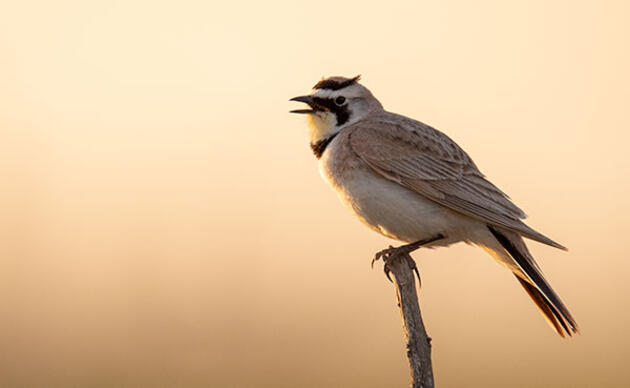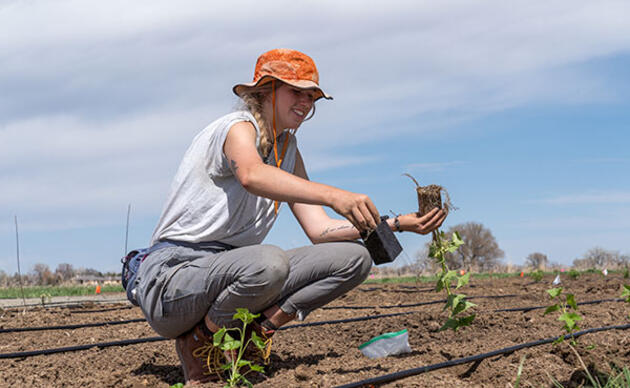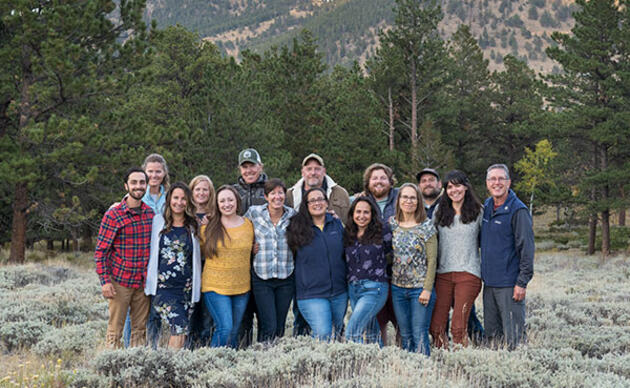Our mission: Make a positive difference for birds and wildlife right at home where we all live. Share the joy from nurturing wildlife in yards and other everyday landscapes. Join Audubon Rockies, Plant Select and High Country Gardens in promoting wildscaping. Be a habitat hero.
Be a Habitat Hero interviewed the founder of the project, Connie Holsinger of Terra Foundation, about the chickadee that transformed her into an activist who knows the truth of the saying, “Plant it and they will come.”
Be a Habitat Hero: When did you first discover the rewards of wildscaping, restoring habitat for birds and butterflies and other wildlife at home?
Connie Holsinger: We were living in West Boxford, a small community 30 minutes outside Boston, on the North Shore. I had gone back to school to get my degree, and I needed science credits. I walked out onto our acreage and thought, Here’s my science story. I can do a nature study.
We lived on a hill in the woods. Down at the bottom of the property was a hundred-year-old apple orchard, and right away I noticed it was always full of birds. Up by the house there were no birds.
So I hung a feeder at the house with sunflower seeds, and lo and behold, there was my chickadee. Other birds began to come in too, titmice and cardinals. I hadn’t seen them before putting up the feeder.
I put up a thistle feeder, and first the chickadee came. Then finches appeared. I hung a suet feeder and again, the chickadee came first and then the nuthatches. By then I was volunteering at the Mass Audubon Ipswich River Wildlife Sanctuary and was looking at nature differently: I started seeing.
BHH: When did you make the leap from feeding to providing habitat?
CH: That winter, I put out a heated birdbath, and the chickadee came like it was Miami Beach! That’s when I realized it seemed whatever I did, the birds were watching. So I began to learn....
From Massachusetts, we moved to Sanibel Island, Florida, and got involved in removing exotic Brazilian pepper trees. As soon as we would clear an area of these invasives, the birds would move in looking for seeds and insects. It was magical. The Sanibel-Captiva Conservation Foundation had a nursery selling native plants, and I landscaped my whole yard with natives. Birds of every kind appeared. At that point, I became committed to the idea of wildscaping.
BHH: When did you fall in love with hummingbirds?
CH: When I came to Colorado. Our first house had acres of Kentucky bluegrass lawn. I had never had lawn before and had no idea how much water it needed here. There were no birds. I said, I want hummingbirds. After my experience in Massachusetts and Florida, I knew I could transform my lawn into habitat that would attract hummingbirds—and save water at the same time.
It took me two years. I built mounds and created rock gardens. I planted agastaches, zauschneria, penstemons, red yucca, and other natives that hummingbirds love. The first hummingbird arrived on July 4th. More came, and soon my yard was humming!
That’s when I knew: Plant it and they will come.
I think that’s also when I started to look at nature differently, in that it was part of my spiritual experience. Before, I was wildscaping for the birds. In Colorado, I realized that I needed to restore nature at home because that was my spiritual connection.
You create a sanctuary for yourself, but the wildlife know it’s a sanctuary for them also.
Join Audubon Rockies, Plant Select and High Country Gardens in promoting wildscaping. Be a habitat hero.
By Habitat Hero
Stay in the Know
Sign up for emails to stay up to date on how you can help and enjoy birds in Colorado, Wyoming, and Utah.




